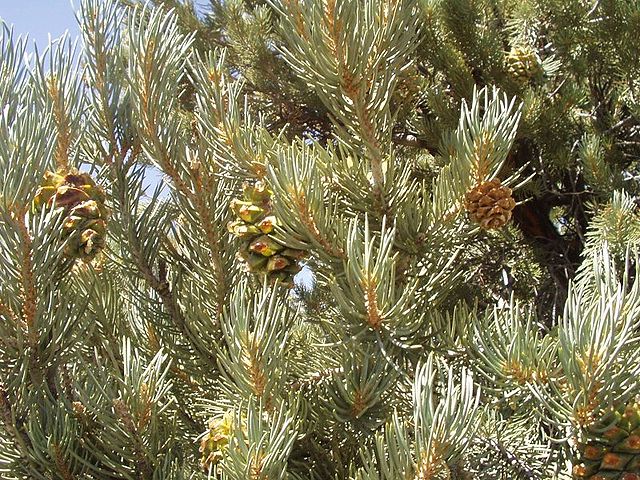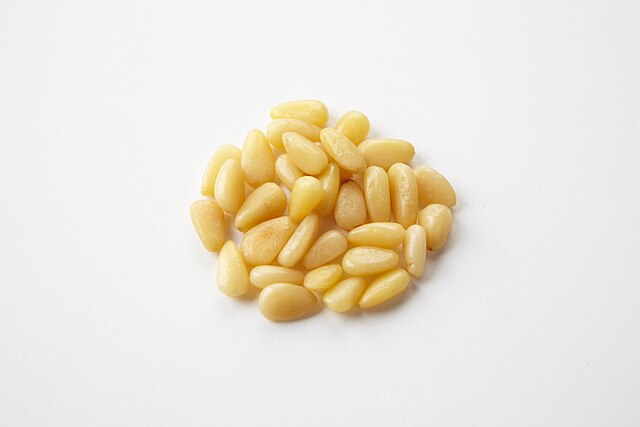The pinyon or piñon pine group grows in southwestern North America, especially in New Mexico, Colorado, Arizona, and Utah. The trees yield edible nuts, which are a staple food of Native Americans, and widely eaten as a snack and as an ingredient in New Mexican cuisine. The name comes from the Spanish pino piñonero, a name used for both the American varieties and the stone pine common in Spain, which also produces edible nuts typical of Mediterranean cuisine. Harvesting techniques of the prehistoric American Indians are still used today to collect the pinyon seeds for personal use or for commercialization. The pinyon nut or seed is high in fats and calories. In the western United States, pinyon pines are often found in pinyon–juniper woodlands.
Pinyon pine
A single-leaf pinyon from Mono County, California. The short stature and rounded crown are typical of the pinyon.
A forest of two-needle piñons in Grand Canyon National Park, Arizona
Pine nuts, also called piñón, pinoli, or pignoli, are the edible seeds of pines. According to the Food and Agriculture Organization, only 29 species provide edible nuts, while 20 are traded locally or internationally owing to their seed size being large enough to be worth harvesting; in other pines, the seeds are also edible but are too small to be of notable value as human food. The biggest producers of pine nuts are China, Russia, North Korea, Pakistan and Afghanistan.
Shelled European pine (Pinus pinea) nuts
Shelled Korean pine (Pinus koraiensis) nuts
Stone pine – note two nuts under each cone scale
Stone pine (Pinus pinea) nuts







